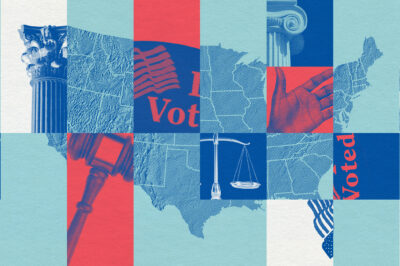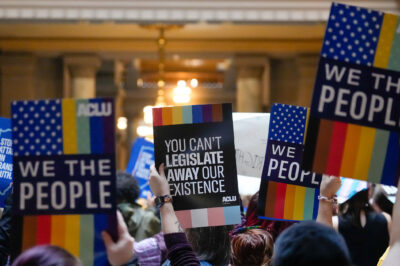Gender issues have been well represented in briefings during the opening days of the Committee on the Elimination of Racial Discrimination‘s (CERD) 72nd session. The Committee requires all countries that have ratified the Convention for the Elimination of All Forms of Racial Discrimination to report on “factors affecting and difficulties experienced in ensuring for women the equal enjoyment, free from racial discrimination, of rights under the Convention.” Member countries must address overlapping of racial- and gender-based discrimination, structural inequalities facing women of color. In its report (PDF), the United States failed to mention this intersectionality – but advocates testifying before the CERD Committee, presenting to the Special Rapporteur on Racism, and speaking on a panel on civil and political rights, put these issues front and center.
In back-to-back sessions held at the Palais Wilson, the smaller United Nations building overlooking Lake Geneva, several women presented first-hand testimony of the ways in which they had been affected by racism and sexism in the U.S.
We heard from Tina Reynolds, a social worker, professor at City University of New York, and a mother of seven. Tina described the substandard medical care she received in prison during her pregnancy and the inhumane treatment she was subjected to during childbirth: “I gave birth to my son while I was in prison, shackled to the gurney during childbirth with an officer who didn’t even know my name observing the arrival of my son.”
And we heard testimony from Vicky Shirley, First Lady of the Navaho Nation, who spoke about the need to end the epidemic of violence against indigenous women in the United States. She reported that Native women are 2 ½ times more likely to be raped in their lifetimes than any other group of women within the U.S., and that one in three Native women will be raped and six in ten will be assaulted in their lifetimes. More than 80 percent of the perpetrators of these violent crimes against Indian women are non-Indian men. Current U.S. law has severely limited the ability of tribal authorities to protect Native women, while failing to provide adequate federal law enforcement services.
During an evening panel, Gihad Ali, a young Muslim woman covered in a light green headscarf, recited a spoken word piece. called “Billboard Girl.” In it, she spoke of the ways in which United States society disrespects women and diminishes our uniqueness by plastering images of the ideal female body everywhere we turn. In rhythmic poetry, she addressed the intersection of gender, race, ethnicity and religion. She concluded her piece: “Why do I cover? Why do you undress?”
It was a full day of proceedings, with testimony and presentations by nearly three dozen advocates. Our large U.S. NGO delegation, numbering over 125 representatives, represents a wide range of perspectives and illustrates the myriad forms of racism and sexism that persist throughout the United States. With this strong a group, we’re sure to make our voices heard. United States: Pay attention!
The ACLU’s shadow report addresses several issues of concern to women of color including conditions of confinement facing women and girls in the criminal and juvenile justice systems, the plight of domestic workers who are exploited by foreign diplomats and denied legal remedies, and the epidemic of violence against women and the government’s failure to respond adequately. Tomorrow, I will be responding to questions from CERD Committee members and speaking on a panel about domestic violence and housing, and specifically the discrimination low-income women of color often face as a result of the violence against them and the need for the Department of Housing and Urban Development to issue regulations implementing the fair housing provisions of the Violence Against Women Act of 2005.



